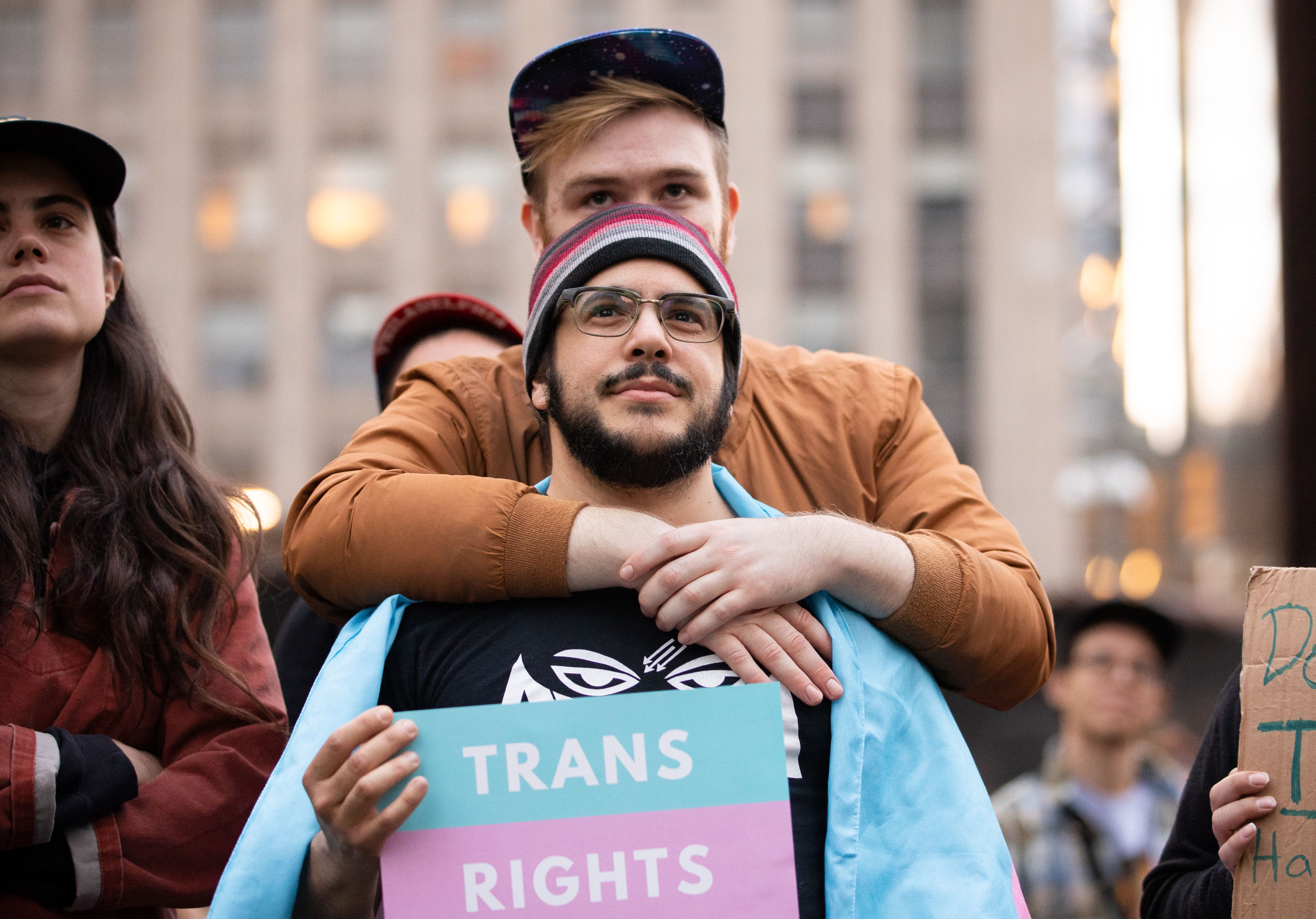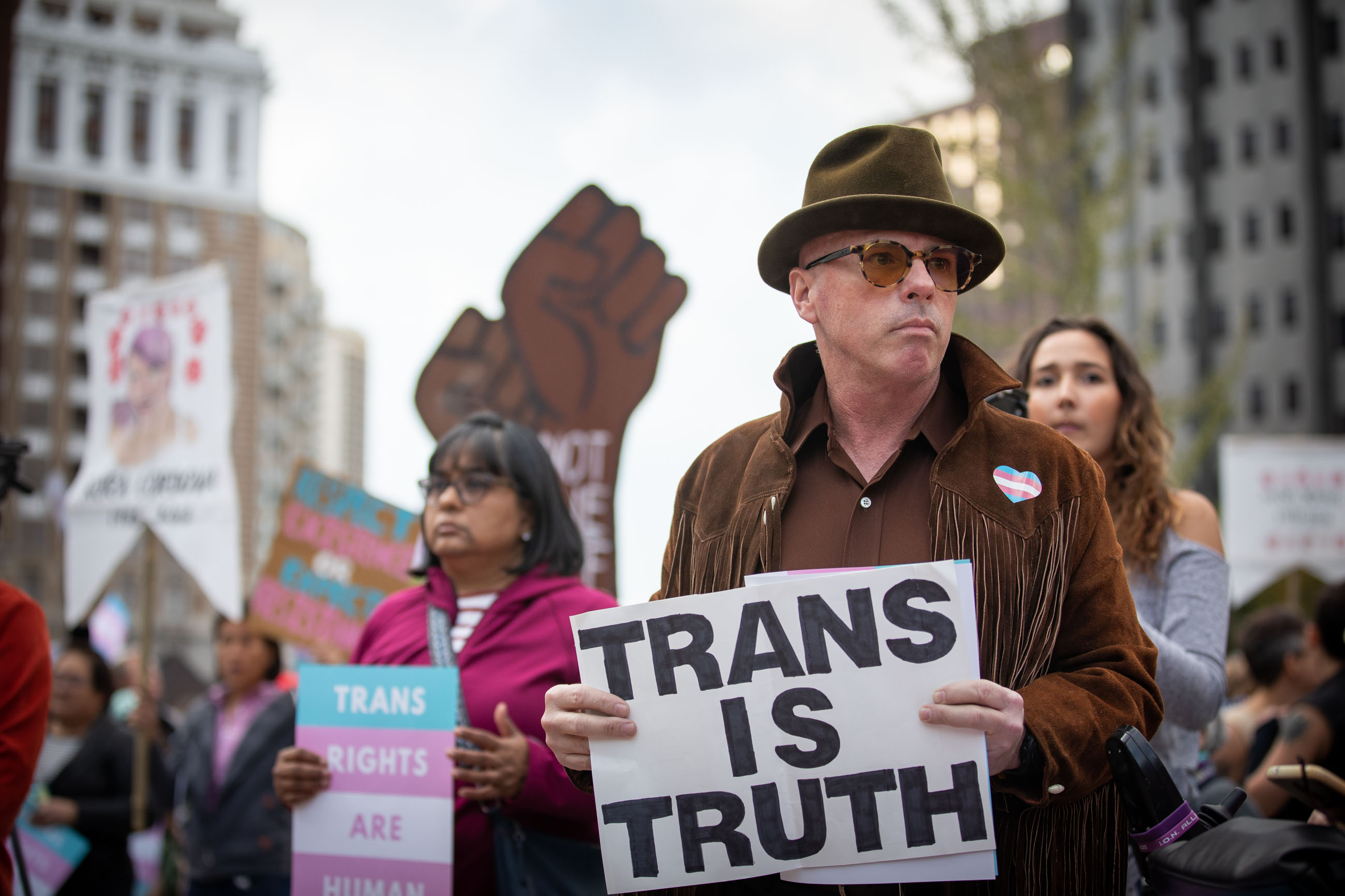Health Care
Ask the experts: Gender-affirming care explained
Transgender health care specialists discuss this practice and the threats facing the field and its vulnerable patients.

Philadelphia City Hall has been the site of numerous rallies in support of trans rights. Office of Governor Tom Wolf
Transgender health care and social issues are among the most high-profile battlefields of the culture wars as bills in several state legislatures look to restrict the rights of transgender individuals. In Pennsylvania, the most notable legislative debate is centered around student athletics and whether or not transgender women should be allowed to participate in women’s sports.
With the conversations about transgender health care and athletics beginning to overlap, it’s worth explaining what gender dysphoria and gender-affirming care are to better understand the medical practices around them – and how proposed legislation could affect the transgender community.
The American Medical Association defines gender dysphoria as “a condition characterized by clinically significant distress and impairment of function resulting from the incongruence between one’s gender identity and the sex assigned at birth.” Gender-affirming care, which has the backing of organizations like AMA and the American Association of Pediatrics, is a model of care that uses nonjudgmental treatment to provide a safe, clinical space for patients to discuss their gender identity and their needs.
City & State spoke to the following experts about gender-affirming care, how it may sometimes be mischaracterized, and the potential effects of proposed legislation targeting transgender rights: Dr. Billie Swiggard, staff physician at the Mazzoni Center in Philadelphia; Dr. Janet Leung, clinical assistant professor of medicine at the University of Pittsburgh Medical Center; Dr. Abby Walch, an endocrinology fellow at the University of California San Francisco; and Dr. Kevin Kline, assistant professor of clinical family medicine and community health at Penn Medicine.

Responses have been edited for length and clarity, and our sources are not speaking as official representatives of their employers.
What are the most common misconceptions you hear about gender-affirming care?
Janet Leung: A lot of people think we just walk in the door and demand things and that’s not what it is at all. There’s a full discussion of the risks and benefits in the exact same way for all the other medical issues.
Billie Swiggard: Many people assume younger humans do not have decision-making capacity … A study came out in the Journal of Pediatrics involving the TransYouth Project, which is a project headquartered in Princeton that follows 317 trans children. The point of the study was to see at the end of five years what percentage of those kids who self-identified, with a mean age of 5 years old, reverted to birth gender – and the answer was approximately 2%. Appropriate pediatric transgender care makes allowances for young folks to change their mind. The whole idea behind puberty-blockers is to prevent the onset of full binary puberty until the patient is considered old enough to truly be certain before gender-affirming hormone therapy is started, usually around age 16.
Kevin Kline: Some misconceptions are that this is new or a fad and that this has not been something that's been around forever. Trans people and queer people have always existed. Whether they were visible or not to the general population, they’ve always been there. One major misconception is that we’re creating a younger generation that identifies as gender-diverse when, really, many people in other generations always have been – but weren’t always out.
Abby Walch: Another common misconception that I hear and that is being built into a lot of legislation across the nation is about medical intervention prior to the onset of puberty. No medical interventions are ever provided to any child or adolescent prior to the onset of puberty.
Can you describe how a patient would go through the steps from social affirmation to using puberty blockers to undergoing hormone therapy?
Kevin Kline: The earliest step is just taking history and hearing the person’s story of their gender and how they have developed their innate sense of what their gender identity is. And overall the stories are all very similar, as they are for most queer people: that this is something they knew when they were young, sometimes before they even had words to describe what it was.
Abby Walch: When we meet a new patient – or when we meet with them and their legal guardians or parents if they’re under 18 – we just talk with them to learn about their health history, then their gender history, their gender identity, and in particular, we’ll focus on areas of dysphoria or their thoughts on what it is that they may or may not need to affirm their gender identity. It’s not a one-size-fits-all approach … Some do not desire any medical interventions. If a patient starts puberty and has worsening gender dysphoria, they would then be eligible for treatment with puberty blockers.
Billie Swiggard: It depends on the person. Patients under 18 seeking gender-affirming care are routed into a program called PACTS – pediatric and adolescent comprehensive transgender services. There’s a team approach to care, and – I can’t emphasize this enough – it’s not a cookie-cutter operation. There is a huge variety of potential pathways … At any time before the onset of puberty, a group decision is made that includes the patient, behavioral health staff, medical staff, and parents to give oral medications to prevent the secretion of the so-called gonadotropins, the pituitary hormones that drive the expression of sex hormones at around the time of puberty.
Are there any instances in which you wouldn’t recommend a patient seeking puberty blockers and/or hormone therapy to undergo those treatments?
Abby Walch: At our center, we require the involvement of a mental health therapist who specializes in gender to provide a letter of support for a patient just stating that they’ve talked with them about the pros and cons, risks and benefits of therapy and things that we also cover. But the patient is also talking with them about their gender identity and attesting to the belief that they will benefit from medical intervention. A patient who is in the early adolescent stages of puberty might be eligible for puberty blockers alone for a period of time as they get older. If they persist in their gender identities and if they meet the criteria then for gender-affirming sex hormone therapy – testosterone or estrogen – they may start those therapies. If they decide that they want to stop the puberty blockers and undergo puberty that’s aligned with their sex designated effort, that can happen at any time, too.
Janet Leung: If you have certain activities that are hormone-sensitive, or you’ve had a recent heart attack or stroke, we might want to fully optimize the risk factors. We do know that there is a risk of having blood clots or strokes and heart attacks … For an endocrinologist, there’s always our list of benefits of hormones and the want to decrease the risk of harm. So what is my incremental risk of treating you now, as opposed to the risk of leaving you with your gender dysphoria untreated and having your suicidality or having substance abuse issues?

How important is this type of care to the LGBTQ+ community and do you see some of the proposed legislation targeting transgender individuals affecting your patients?
Abby Walch: There’s a heaviness that I sense in our field and within our patients and their families that wasn’t there when I started training in this field just a few short years ago. I think the ways in which it is impacting the mental health of our patients are unmeasurable.
Billie Swiggard: We’re talking about something that is not life-threatening but life-affirming. We know that for trans kids who do not get gender-affirming care, the suicide rate is shockingly high compared to those who get gender-affirming care. I was finally able to transition as a senior citizen and I’ve been able to use not only my very identity but also my history of abuse and bullying as a window to open into trauma-informed care because so many of the patients that we see are deeply traumatized. My experience of transitioning has been a joyful and life-affirming one. I’m happy to report that a lot of the people that abused me are now dead and my family has remained hugely supportive.

